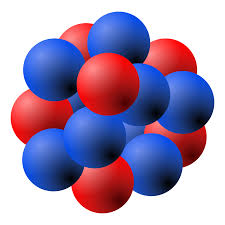Learning Objectives
- Learn about the various foodborne illness
Foodborne illnesses are either infectious or toxic in nature. The difference depends on the agent that causes the condition. Microbes, such as bacteria, cause food infections, while toxins, such as the kind produced by molds, cause intoxications. Different diseases manifest in different ways, so signs and symptoms can vary with the source of contamination. However the illness occurs, the microbe or toxin enters the body through the gastrointestinal tract, and as a result common symptoms include diarrhea, nausea, and abdominal pain. Additional symptoms may include vomiting, dehydration, lightheadedness, and rapid heartbeat. More severe complications can include a high fever, diarrhea that lasts more than three days, prolonged vomiting, bloody stools, and signs of shock.
One of the biggest misconceptions about foodborne illness is that it is always triggered by the last meal that a person ate. However, it may take several days or more before the onset of symptoms. If you develop a foodborne illness, you should rest and drink plenty of fluids. Avoid antidiarrheal medications, because they could slow the elimination of the contaminant.
Food Infection
According to the CDC, more than 250 different foodborne diseases have been identified.[1] Majority of these diseases are food infections, which means they are caused from food contaminated by microorganisms, such as bacteria, by microscopic animals called parasites, or by viruses. The infection then grows inside the body and becomes the source of symptoms. Food infections can be sporadic and often are not reported to physicians. However, occasional outbreaks occur that put communities, states and provinces, or even entire nations at risk. For example, in 1994, an outbreak of the infection salmonellosis occurred in the United States due to contaminated ice cream. An estimated 224,000 people became ill. In 1988, contaminated clams resulted in an outbreak of hepatitis A in China, which affected about 300,000 people.[2]
The Reproduction of Microorganisms
Bacteria, one of the most common agents of food infection, are single-celled microorganisms that are too small to be seen with the human eye. Microbes live, die, and reproduce, and like all living creatures, they depend on certain conditions to survive and thrive. In order to reproduce within food, microorganisms require the following:
- Temperature: Between 40°F and 140°F, which is called the danger zone, bacteria grow rapidly.
- Time: More than two hours in the danger zone.
- Water: High moisture content is helpful. Fresh fruits and vegetables have the highest moisture content.
- Oxygen: Most microorganisms need oxygen to grow and multiply, but a few are anaerobic and do not.
- Acidity and pH Level: Foods that have a low level of acidity (or a high pH level) provide an ideal environment, since most microorganisms grow best around pH 7.0 and not many will grow below pH 4.0 . Examples of higher pH foods include egg, meat, seafood, milk, and corn. Examples of low pH foods include citrus fruits, sauerkraut, tomatoes, and pineapples.
- Nutrient Content: Microorganisms need protein, starch, sugars, fats, and other compounds to grow. Typically high-protein foods are better for bacterial growth.
Food Intoxication
Other kinds of foodborne illness are food intoxications, which are caused by natural toxins or harmful chemicals. These and other unspecified agents are major contributors to episodes of acute gastroenteritis and other kinds of foodborne illness.[3] Like pathogens, toxins and chemicals can be introduced to food during cultivation, harvesting, processing, or distribution. Some toxins can lead to symptoms that are also common to food infection, such as abdominal cramping, while others can cause different kinds of symptoms and complications, some very severe. For example, mercury, which is sometimes found in fish, can cause neurological damage in infants and children. Exposure to cadmium can cause kidney damage, typically in elderly people.
Contributors and Attributions


